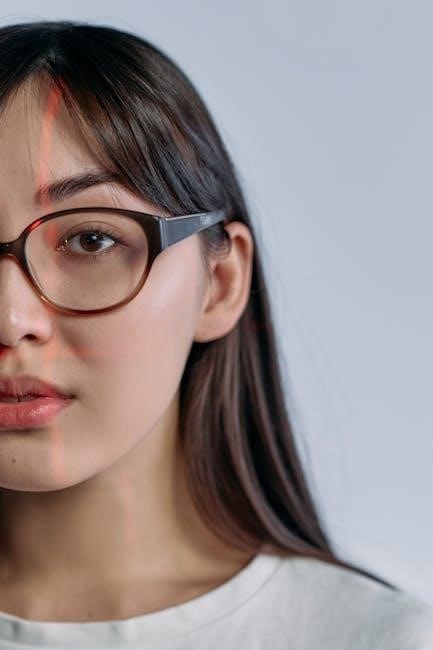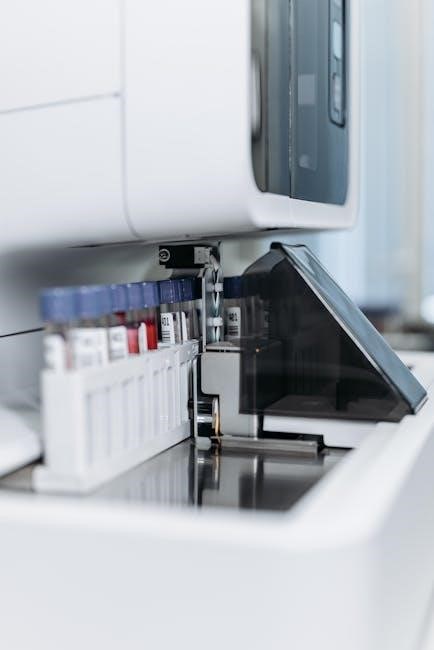
Advanced Skin Analysis: A Comprehensive Guide
This comprehensive guide explores the cutting-edge realm of advanced skin analysis, a crucial field for professionals in cosmetic dermatology and skin treatment therapy; It delves into modern techniques and technologies, revealing how they enable a deeper understanding of skin health and personalized skincare approaches for optimal results.
Advanced Skin Analysis represents a significant leap beyond traditional methods of assessing skin condition. It leverages sophisticated technologies and methodologies to visualize not only the skin’s surface but also the underlying layers, structures, and patterns that influence its overall health and appearance. This comprehensive approach allows skin treatment practitioners to gain a deeper understanding of individual skin concerns, enabling them to tailor treatments with greater precision.

By incorporating tools such as advanced imaging devices and AI-powered analysis, professionals can identify a wide range of skin issues, including uneven skin tone, acne, sun damage, and underlying vascular conditions. These advanced techniques quantify topical product penetration, providing valuable insights into treatment effectiveness. Furthermore, the integration of diagnostic indicator references, coupled with color photographs, facilitates accurate and confident diagnoses of various skin conditions.
This introduction sets the stage for exploring the various facets of advanced skin analysis, highlighting its importance in achieving personalized skincare regimens and optimal treatment outcomes. The goal is to empower skin professionals with the knowledge and skills necessary to effectively utilize these advanced tools and techniques for the benefit of their clients.
The Pastiche Method in Advanced Skin Analysis
The Pastiche Method stands as a cornerstone in advanced skin analysis, offering a unique and comprehensive approach to understanding skin conditions. Developed by Florence Barrett-Hill, this method goes beyond surface-level observation, delving into the underlying factors that contribute to skin health and dysfunction. It’s a diagnostic procedure used by individuals working in cosmetic dermatology and skin treatment therapy.

This method emphasizes a holistic evaluation, considering not only the visible signs of skin issues but also the client’s lifestyle, medical history, and environmental exposures. By integrating this information with a thorough examination of the skin, practitioners can develop a more accurate and personalized treatment plan.

The Pastiche Method utilizes diagnostic flow charts that assist in categorizing findings, leading to a quick and summarized result. It allows professionals to visualize the total skin condition, including underlying invisible layers, skin structures, and patterns. Ultimately, the Pastiche Method empowers skin therapists to effectively address the root causes of skin concerns, leading to improved client outcomes and satisfaction through personalized skincare regimens.
Key Steps in Effective Skin Analysis
Effective skin analysis involves a systematic approach, ensuring a thorough understanding of the client’s skin condition. The process typically begins with a detailed client consultation, gathering information about their concerns, lifestyle, and medical history. This initial step is crucial for establishing a baseline and identifying potential contributing factors to skin issues.

Following the consultation, a visual examination is conducted to assess the skin’s overall appearance, noting factors like tone, texture, and any visible imperfections. Tactile examination follows, involving gentle touch to evaluate skin texture, hydration levels, and underlying structures. Magnifying tools are then used to provide a closer look at pores, fine lines, and other details that may not be visible to the naked eye.
The key steps for effective skin analysis involve client consultation, visual examination, tactile examination, and magnification. By following these steps, practitioners can gather comprehensive information, leading to accurate diagnoses and personalized treatment plans tailored to each client’s unique needs, ensuring optimal results and satisfaction.
The Role of AI in Modern Skin Analysis
Artificial intelligence (AI) is revolutionizing modern skin analysis, offering advanced capabilities for detecting and assessing various skin concerns. AI-powered skin scanners can analyze facial images to identify issues such as dark circles, redness, pores, wrinkles, and acne, providing a comprehensive overview of skin health.
These AI systems utilize sophisticated algorithms to quantify topical product penetration over time and offer valuable insights into skin conditions. They can analyze skin tones, detect unevenness, and assess the severity of acne with remarkable accuracy. By leveraging AI, skincare professionals can gain a deeper understanding of the skin’s underlying structures and patterns, leading to more personalized and effective treatment plans.
AI algorithms enhance the precision and efficiency of skin analysis, enabling practitioners to visualize the total skin condition, including underlying invisible layers. This technology allows for early detection of potential problems, facilitating proactive interventions and improved outcomes. AI is undoubtedly transforming the landscape of skin analysis, empowering professionals to deliver targeted and data-driven skincare solutions.
Visual Examination Techniques
Visual examination forms a cornerstone of skin analysis, providing crucial insights into the skin’s surface characteristics. This technique involves a detailed observation of the skin to identify visible signs of various conditions, such as texture irregularities, color variations, and the presence of lesions or blemishes. A trained eye can discern subtle nuances that indicate underlying skin health issues.
Effective visual examination often incorporates magnification tools to enhance the visibility of fine details. By carefully observing the skin’s surface under magnification, practitioners can assess pore size, identify early signs of sun damage, and evaluate the depth of wrinkles. Lighting conditions play a vital role in visual examination, as different lighting can highlight specific skin features.
Furthermore, visual analysis includes evaluating skin tone evenness, identifying areas of hyperpigmentation or hypopigmentation, and assessing vascular conditions like redness or broken capillaries. Combining visual examination with other diagnostic methods provides a comprehensive understanding of the skin’s overall condition, enabling targeted and effective treatment strategies.

Tactile Examination Methods
Tactile examination, or palpation, is a crucial component of advanced skin analysis, providing information beyond what can be observed visually. This technique involves using the fingertips to assess the skin’s texture, temperature, and underlying structures. By gently touching and manipulating the skin, practitioners can gain valuable insights into its hydration levels, elasticity, and the presence of subcutaneous conditions.

During tactile examination, the practitioner evaluates the skin’s smoothness, roughness, and the presence of any raised or hardened areas. This method can help identify conditions like keratosis pilaris, eczema, or even subtle changes associated with early stages of skin cancer. Skin elasticity, or turgor, is assessed by gently pinching the skin and observing how quickly it returns to its normal state, indicating hydration and collagen levels.
Furthermore, tactile examination can reveal information about underlying structures, such as identifying the presence of cysts, nodules, or areas of inflammation. By combining tactile findings with visual observations, practitioners can develop a more complete understanding of the skin’s health and tailor treatment plans accordingly, leading to more effective outcomes.

Advanced Imaging Technologies and Devices
Advanced imaging technologies have revolutionized skin analysis, providing practitioners with unprecedented insights into the skin’s condition, both on the surface and in deeper layers. These devices utilize various methods, including digital photography, spectroscopic analysis, and confocal microscopy, to capture detailed images and data.
One common technology is the use of specialized cameras with enhanced magnification and lighting to reveal subtle skin features, such as fine lines, wrinkles, and pore size. Spectroscopic analysis, like reflectance spectroscopy, measures how light interacts with the skin, providing information about pigmentation, collagen density, and blood flow. Confocal microscopy allows for non-invasive visualization of skin structures at a cellular level, aiding in the diagnosis of skin cancers and other dermatological conditions.
AI-powered skin scanners can also detect a wide range of skin concerns, including dark circles, redness, pores, wrinkles and acne. These devices use algorithms to analyze skin images and quantify various parameters, providing objective data for treatment planning and progress tracking. Dermacatch, a colorimeter using entire visible-spectrum reflectance in regional skin analysis, has also demonstrated remarkable specificity.
Benefits of Personalized Skincare Regimens
Personalized skincare regimens, derived from advanced skin analysis, offer a multitude of benefits compared to generic, one-size-fits-all approaches. By precisely assessing an individual’s skin condition, including underlying issues invisible to the naked eye, skincare professionals can tailor treatments to specific needs and concerns.
A key advantage is the increased effectiveness of treatments. By targeting the root causes of skin problems, such as hyperpigmentation, acne, or premature aging, personalized regimens deliver more noticeable and lasting results. This approach avoids the potential for irritation or inefficacy that can occur when using products not suited to a particular skin type or condition.
Moreover, personalized skincare promotes better skin health in the long term. By addressing individual skin needs, it can prevent future damage and maintain optimal hydration, elasticity, and overall radiance. This proactive approach empowers individuals to take control of their skin health and achieve their desired aesthetic goals. It also fosters a deeper understanding of one’s skin, leading to informed product choices and sustainable skincare habits and routines.
Utilizing Diagnostic Indicator References

Diagnostic indicator references play a pivotal role in advanced skin analysis, enabling skincare professionals to accurately identify and assess a wide range of skin conditions. These references, often presented with color photographs and detailed descriptions, serve as valuable tools for comparing observed skin characteristics with established benchmarks.
By utilizing diagnostic indicator references, therapists and practitioners can confidently diagnose various skin issues, from subtle variations in skin tone to more pronounced conditions like rosacea or sun damage. This approach helps to minimize subjective interpretation and ensures a consistent and reliable assessment process.
Furthermore, diagnostic indicator references facilitate effective communication with clients. By visually demonstrating the specific characteristics of their skin condition, practitioners can better explain the underlying causes and recommend appropriate treatment options. This transparency fosters trust and empowers clients to actively participate in their skincare journey.

The use of diagnostic indicator references streamlines the diagnostic process, allowing for quick and accurate identification of skin concerns. This efficiency translates to improved treatment planning and ultimately, better outcomes for clients seeking to improve their skin health and appearance.